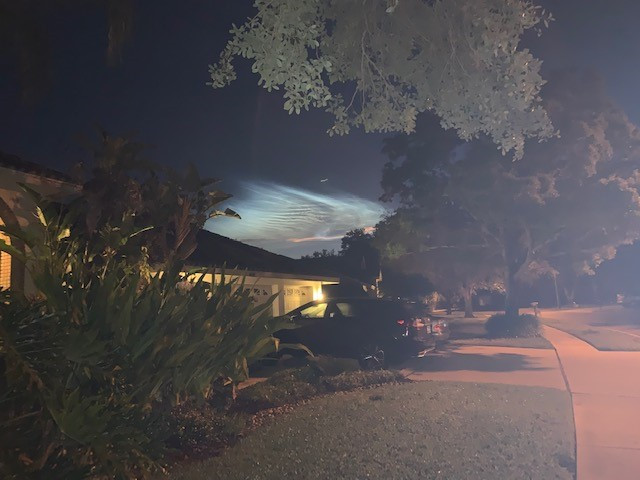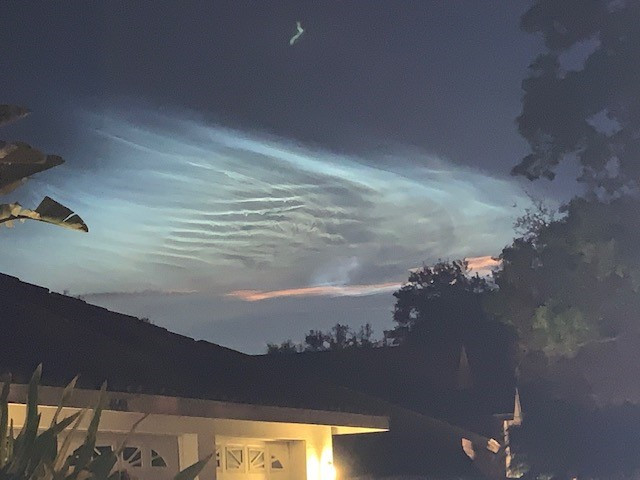TAMPA, Fla. (WFLA) — Early Sunday morning at 6:01 ET, SpaceX launched a Falcon 9 rocket from Kennedy Space Center in Florida. The rocket launched 60 more Starlink satellites into orbit without failure and landed the booster for a record ninth time in the Atlantic Ocean.
After the launch, the rocket’s contrail lingered in the early morning sky. It lingered through the “astronomical twilight” hours, which is defined as when the sun is 12 to 18 degrees below the horizon, according to timeanddate.com.
During the twilight hours, the sun’s rays illuminated the elevated remnants of the contrail high up in the atmosphere. The bright clouds many saw illuminated are called noctilucent clouds. They are brighter than the surrounding clouds because they are significantly higher than the rest, hundreds of thousands of feet up. At this height in the atmosphere, the contrail is made up of tiny ice crystals.
While the sun is not above the horizon yet, the rays are. The sun’s rays are just peaking around the curvature of the earth (for us) and illuminating the ice crystals. As the light passes through the ice, it bends and we see different colors.

To visualize how the clouds are illuminated, take a flashlight and point it at a tennis ball from a few feet away. From our perspective, we would be sitting near the top of the ball but the light isn’t reaching the surface yet. However, the rays are lighting up the area above us and if you put an object up there, you’ll see it light up, much like the clouds are here.










